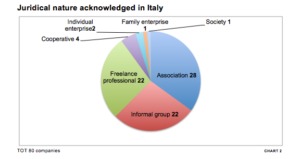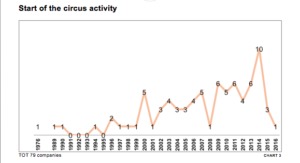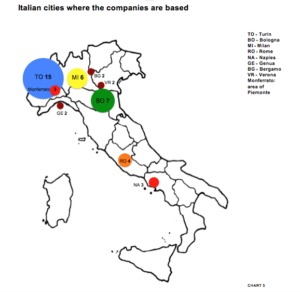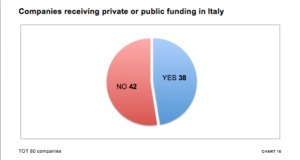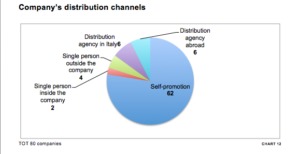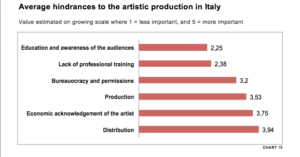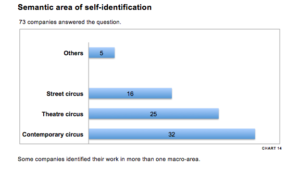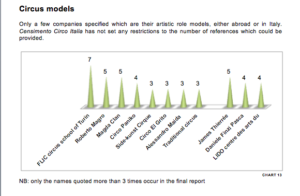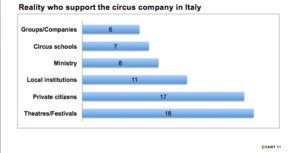Who is Doing Circus in Italy? Censimento Circo Italia Project & Its Impact on the Field
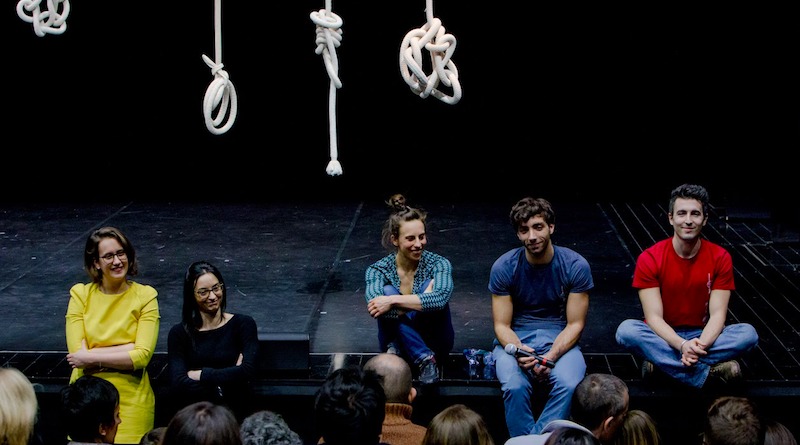
If you come to Italy and mention the word circus, many people would still go for “Oh! Lions, ringmaster, elephants! The tent!” It sounds unreasonable, but last October the arguments under an Instagram post[1]of the City Council of Bologna shows a reality not far from such a crazy conjecture.
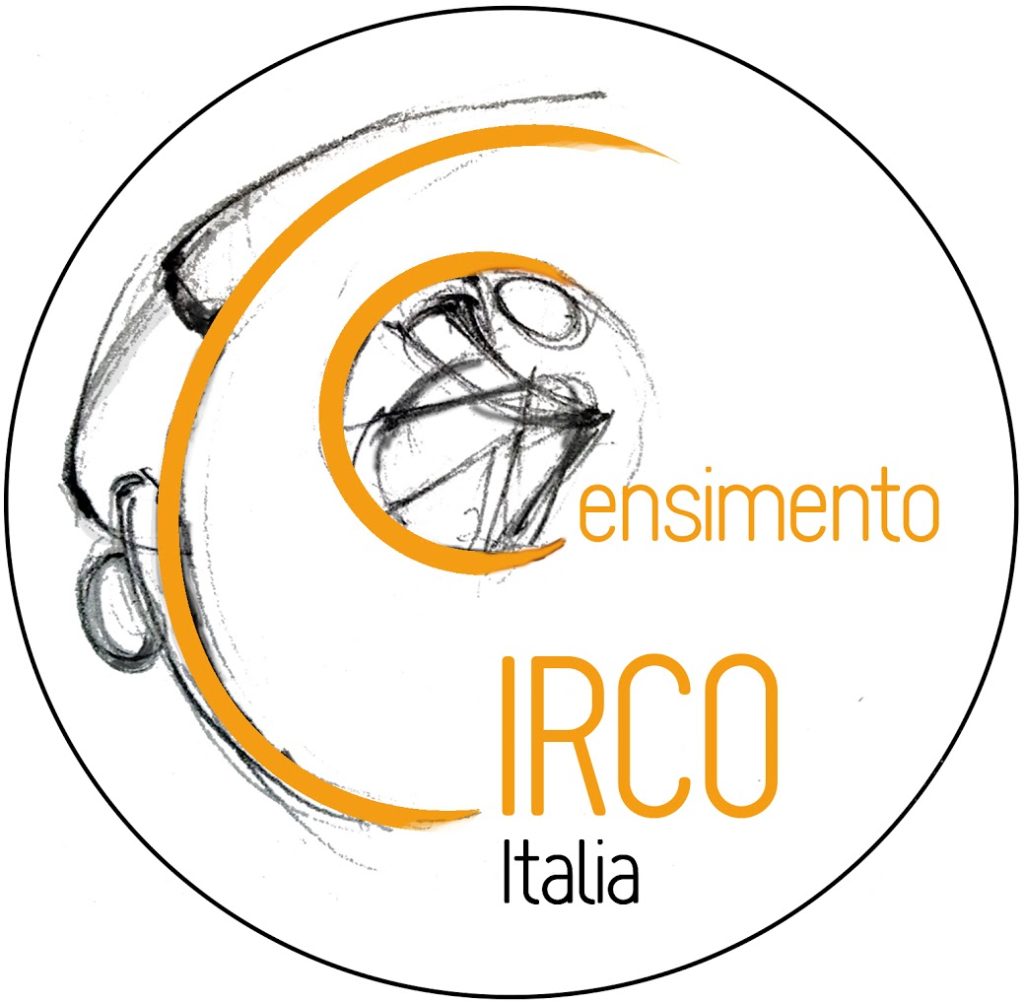 The facts are the following: in the last few years in Italy a small number of contemporary circus artists with international experience decided to give new meaning to the traditional tent. MagdaClan, Side Kunst Cirque, Circo Paniko, Circo El Grito are just a few examples of those. In 2017, these companies decided to gather in Bologna and create Città di Circo, a brand new experience: a spontaneous and self-funded festival where the Italian contemporary circus tents build a “city of circuses” and give free shows to the audience. In a country where public funding for contemporary circus has witnessed a remarkable increase in the last few years but it is still far from other European standards, [2] Città di Circo proves to be a great example of active citizenship and spectatorship: the organizers are volunteers, food is self-made and shared, and the spectators pay what they can for each shows.
The facts are the following: in the last few years in Italy a small number of contemporary circus artists with international experience decided to give new meaning to the traditional tent. MagdaClan, Side Kunst Cirque, Circo Paniko, Circo El Grito are just a few examples of those. In 2017, these companies decided to gather in Bologna and create Città di Circo, a brand new experience: a spontaneous and self-funded festival where the Italian contemporary circus tents build a “city of circuses” and give free shows to the audience. In a country where public funding for contemporary circus has witnessed a remarkable increase in the last few years but it is still far from other European standards, [2] Città di Circo proves to be a great example of active citizenship and spectatorship: the organizers are volunteers, food is self-made and shared, and the spectators pay what they can for each shows.
This year the premiere of Città di Circo was in Bologna Piazza Maggiore. The mere view of a tent in the middle of the main square of the city fostered a high wave of unjustified hate speech and anger toward the circus people who were assumed to be “exploiting animals” and making “exotic animals suffer.” When the organizers, exhausted by days and days of comment moderation, started answering ironically that “in our circus the only animals you will see have no hairs and two legs” (i.e. humans), lots of people did not even get the joke. This episode shows one thing: compared to other countries where circus is seen as a mature performing art, in Italy, circus still suffers from an old and strong bias. But what is the actual state of things? Is the Italian panorama monopolized by traditional circus companies? Or is it just a matter of perception?
In 2015 Gaia Vimercati and Filippo Malerba, organizers and members of Quattrox4 (a circus organization based in Milan, Italy) wanted to discover more about the situation in Italy. Their research question was: who is doing circus in Italy in 2015? And how? Seeing the difficulty in finding straightforward answers, they decided to study the field together and do the first official circus census. This is how the project Censimento Circo Italia was born.
Censimento Circo Italia(2015),which did not benefit from any grants (public or private)[3]was an independent project with the aim of creating the first map of the Italian companies doing circus. Its primary purpose was to involve all Italian subjects in order to build a shared identity of the Italian circus scene and to promote its collocation on a European and international level. On the one hand,Censimento Circo Italia had the quantitative purpose of knowing how many companies were doing circus in 2015, and on the other hand it intended to engage the companies in reflection about their approach to the heterogeneous world of present-day circus. The first Censimento focused only on circus companies (and not schools, festivals, etc) intended as “any recognized subject that has produced at least one show, thus enriching the diverse panorama of circus intended as a performing art”.
How to Make a Circus Census in 5 Steps
1. SETTING PURPOSE & OBJECTIVE
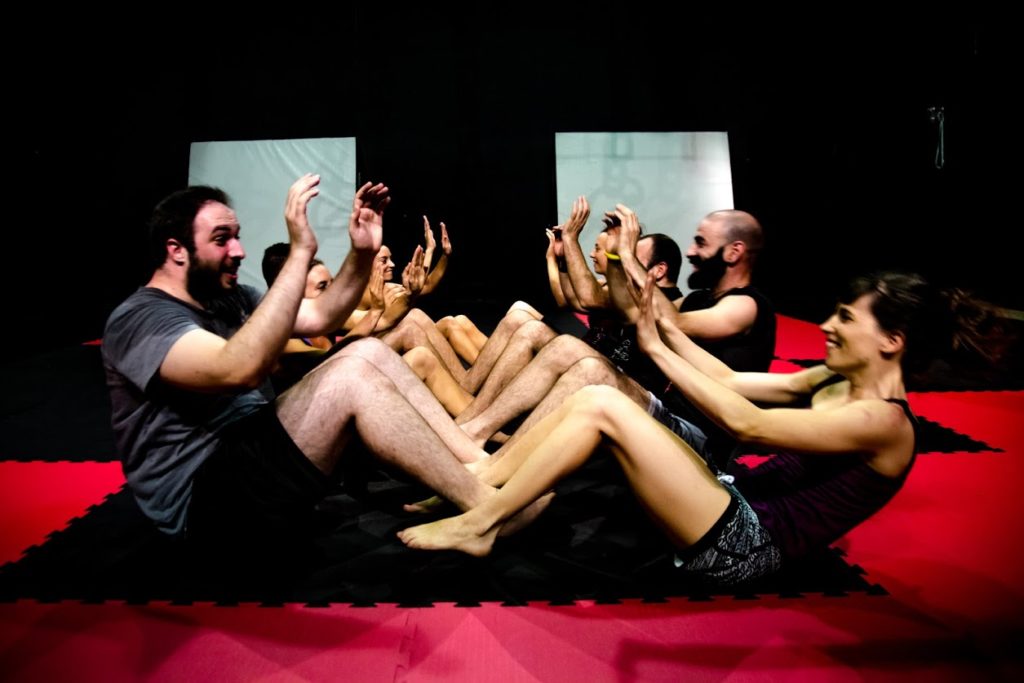
Censimento Circo Italia was intended to be open to all of the circus companies who bring circus disciplines to the stage, thus contributing to the development of circus as scenic language. The circus companies[4], could be either individual ones (made by one person), or collective ones (when they are made by two or more people, whatever roles the members are). Despite the narrow focus, “Italy” was not to be intended as a mere geographical reference but as a feeling of belonging. This is to say that a company can look at themself as “Italian” and thus fill in the questionnaire even if most of its members are not Italian, or if the company is not based in Italy. As far as the purposes are concerned, Censimento Circo Italia project:
- Does not want to promote circus, but to know it
- Has both a quantitative and qualitative purpose
2. DRAWING THE STRUCTURE
Censimento Circo Italia’s data collection was carried out through an online questionnaire available on the Internet for a span of four months (1 November 2015 – 29 February 2016) The online survey was made of 35 questions divided into 6 sections:
- Introductory remarks
- Production and distribution
- Biography of the company
- Artistic conception
- Main show or personal “manifesto”
- Criticism and proposals (open questions)
3. FINDING THE RIGHT METHODOLOGY
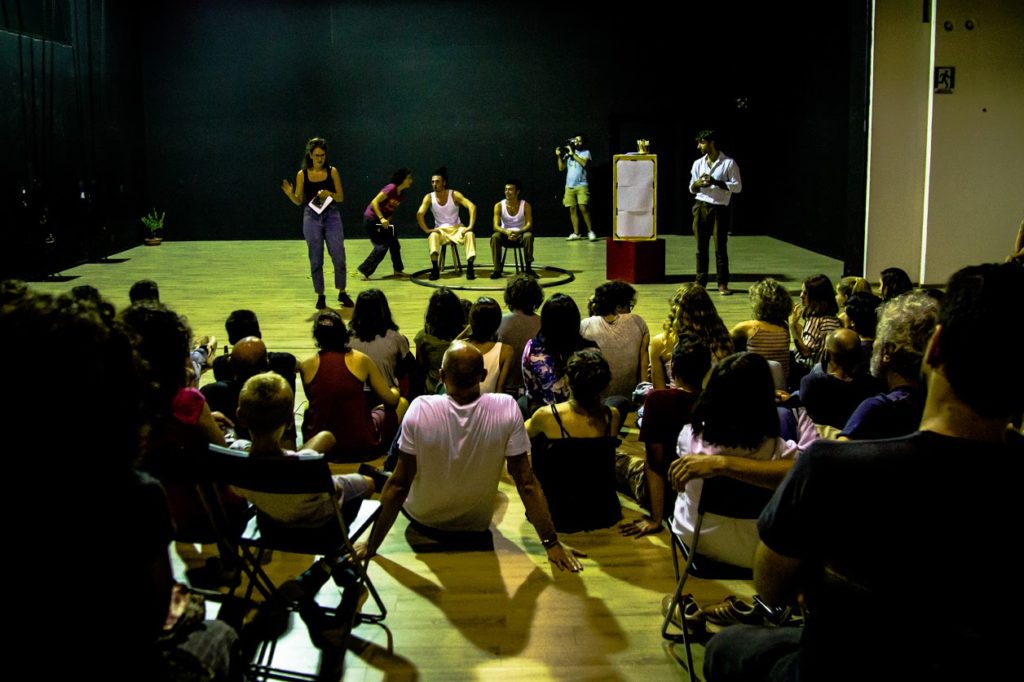
As Censimento Circo Italia was conducting qualitative analysis of the field rather than a just a “quantitative” one, only the questionnaires that provided sufficient information of the company were considered valid (50% of the questions).
In order to reduce the number of non-valid or incomplete forms submitted, the companies were personally solicited and asked submit them anew. Nonetheless, some of the forms turned out to be not valid.
Each company could fill the form more than once and edit it, if needed. When two or more similar forms were detected in the database, the companies had to state which of the questionnaires they wanted to be considered for the case study.
The artists working in two or more circus companies could fill as many forms as the represented realities. This turned out to be a frequent case, for instance, for artists performing as individuals as well as a collective company.
All the questions could be expanded with further opinions and proposals.
4. PROMOTION OF THE SURVEY AND DISTRIBUTION
The questionnaire of Censimento was uploaded on an online platform (“Survey monkey”)
The project was presented at several conferences and promoted by circus networks (Quattrox4, Corpi e Visioni, Quinta Parete, FNAS; Cresco, Open Circus, CITA)
5. COLLECTING DATA AND WRITING THE FINAL REPORT
The overall results of the survey were summarized through charts and infographics.
The most significant open answers were written in the report and all the forms. Every form could be consulted upon request.
Significant results: what did we find out?
In Italy , 100 companies answered the survey, but the valid questionnaires were 80. So Censimento Circo Italia is the outcome of the answers given by 80 companies submitting the questionnaire correctly. Unfortunately, it is not possible to state the significance of this datum compared to previous years as this is the first case study.
- In Italy the juridical status of the companies is quite heterogeneous: there are family enterprises (1), individual enterprises (2), societies (1) cooperatives (4), association (28), freelance professionals (22), informal groups (22).
- The number of companies has been increasing quite steadily since 1976.
- 12/80 companies consider themselves Italian despite being based abroad or being made by foreign artists.
- Turin (15), Bologna (7), Milan (6) are the cities with the highest rate of companies. Those cities are all in the North of the Country.
- 87% of the artists answering the survey is from Italy.
- 24/80 companies are solo companies. 22 companies are duos, 11 are trios.
- 10/80 companies work under their own chapiteau.
- 42/80 companies do not benefit from any kind of funding.
- 62/80 companies rely on self-distribution and not on distribution agencies or third parts.
- 3 questionnaires filled by female artists underlined the importance of circus to promote a concept of beauty different from the “commercialized” stereotypes proposed by the media. This shows an open annoyance with the perception of being judged on purely physical appearance rather than on a genuine insight of someone’s artistic quality. “Good-looking should definitely stop being synonym of valuable artist or piece of work.”
- The three biggest hindrances to artistic production are: distribution (3,94/5), economic acknowledgements of the artist (3,75/5), means of production (3,53/5) bureaucracy and permissions (3,2/5). (In a scale of importance from 1 to 5)
- All of the companies were asked to put themselves under these umbrella terms: (Traditional circus, Street art, Contemporary circus, Entertainment circus / Cirque du Soleil model, Theatre circus, Other (to be specified). This question could be expanded.
- Several attempts were made by Censimento Circo Italia to involve the Italian traditional circus families, both through personal invitations or specific online requests. Nonetheless, only 3 of these companies handed in an incomplete questionnaire under the validity level of 50%. Therefore the final report does not take into account the traditional circus as none of them were interested in the case study.
DID CENSIMENTO HAVE ANY IMPACT ON THE FIELD? WHAT IS HAPPENING NOW?
- Censimento was the first systematic study in Italy with a narrow focus on present-day circus.
- It was taken by the Ministry of Culture as a concrete tool: after the Franceschini Decree (2014), in 2017 the Italian Parliament abolished the use of animals in the circus. In the same year Censimento entered the official ISTAT (Italian National Institute of Statistics) national charts.
- Together with Quinta Parete Project,in 2016 Censimento made a second attempt at extending its analysis to all the people involved in the circus field (schools, organisers, festivals etc). The project, however, was too broad to be carried out exhaustively with no funding.
- Artists/companies/festivals are beginning to understanding the importance of joining together, and they are starting to network and do roundtables to discuss issues on a larger scale (e.g. Bangherang, Circosfera, Associazione Circo Contemporaneo Italiano, etc) in the search for official recognition.
- In 2017 A.C.C.I – Associazione Circo Contemporaneo Italia was founded as the first category association. Its main purpose is to negotiate for better recognition with the Ministry of Culture. A.C.C.I. now counts 20 entities with different roles in the circus industry. Within the association, however, the individual perspectives are often very different and colliding, thus making it hard to come out with a shared and straightforward to be presented. This diversity the beauty and complexity of present-day circus in Italy, which is made of different experiences, conceptions and approaches to the same art. This maybe due to the fact that in Italy contemporary circus has never had any institutional status or support (such as happened in Canada, France or in Belgium, maybe). However, this is extremely positive for the development of the field: Censimento raised a great desire to participate: more and more companies, schools and festivals want to be active players.
FINAL CONSIDERATIONS: WHAT DID CENSIMENTO LEAD TO AND WHAT CAN BE DONE?
Since 2009-2010, the circus panorama has been rapidly changing. Censimento has to be done on a regular basis in order to make a comparative analysis useful in the long term. Censimento is not sustainable if it is self-funded. It needs to be funded by the State or impartial sources. It could be used as a worldwide model for a circus census based on the data collected by the single nationalities. Imagine if each country did a national circus census!
The final and most compelling question is: what has the Censimento Circo Italia experience taught us? The bad news is that there is much to be done and that it might take energy, time and money. The good news is that through cooperation and hard work, we can all make it.
CENSIMNETO CIRCO ITALIA DATA (Click to open gallery)
[1]This is the post on Instagram [2] In 2015 public funding consisted of: Companies got 80.000 euro. Non-competitive festivals got 150.000 euro. Professional schools got: 351.000 euro. In 2018: Companies got 280.000 euro. Non-competitive Festivals got 170.000 euro. Professional schools got 546.000 euro. Data source 2018 Data source 2015 [3]Filippo Malerba and Gaia Vimercati are in charge of all the communication, organization and travel expenses. [4]This specific project does not mean to study the circus phenomenon in general, but it narrows its focus down to the artistic production. For this reason, all the other institutions contributing to the promotion (and not production) of circus, e.g. schools, festivals, operators etc, are not objects of this case study.
Feature photo courtesy of Alessandro Villa.
Editor's Note: At StageLync, an international platform for the performing arts, we celebrate the diversity of our writers' backgrounds. We recognize and support their choice to use either American or British English in their articles, respecting their individual preferences and origins. This policy allows us to embrace a wide range of linguistic expressions, enriching our content and reflecting the global nature of our community.
🎧 Join us on the StageLync Podcast for inspiring stories from the world of performing arts! Tune in to hear from the creative minds who bring magic to life, both onstage and behind the scenes. 🎙️ 👉 Listen now!
